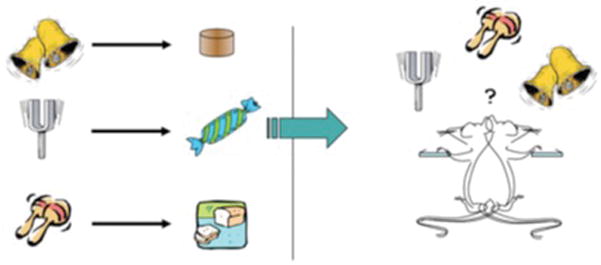Figure 2.

Pavlovian-instrumental transfer. In this depiction, rats are first given pairings between three different auditory stimuli and three different food outcomes. Later they are trained on two actions, say two levers, delivering two of the three outcomes used in the first phase as depicted in the left panel of Figure 1. They are subsequently given a choice test on the two levers in which the three stimuli are presented in extinction. As previously reported (e.g. [29], [31]), this treatment generates evidence for two forms of transfer effect: (i) a general form, which is here depicted by the ‘maracas stimulus paired with a food outcome that is not then earned by lever pressing the presentation of which results in a general increase in the performance of both actions and (ii) a specific form, here depicted by the ‘bell’ and ‘tuning fork’ stimuli associated with the food outcomes that were also earned by pressing the levers. The effect of the stimulus presentation in this situation is to bias choice towards the action that, in training, earned the outcome predicted by the stimulus; e.g. if the left lever earned sugar then the tuning fork would enhance responding on that lever and not the bell, which would bias responding towards the right lever.
